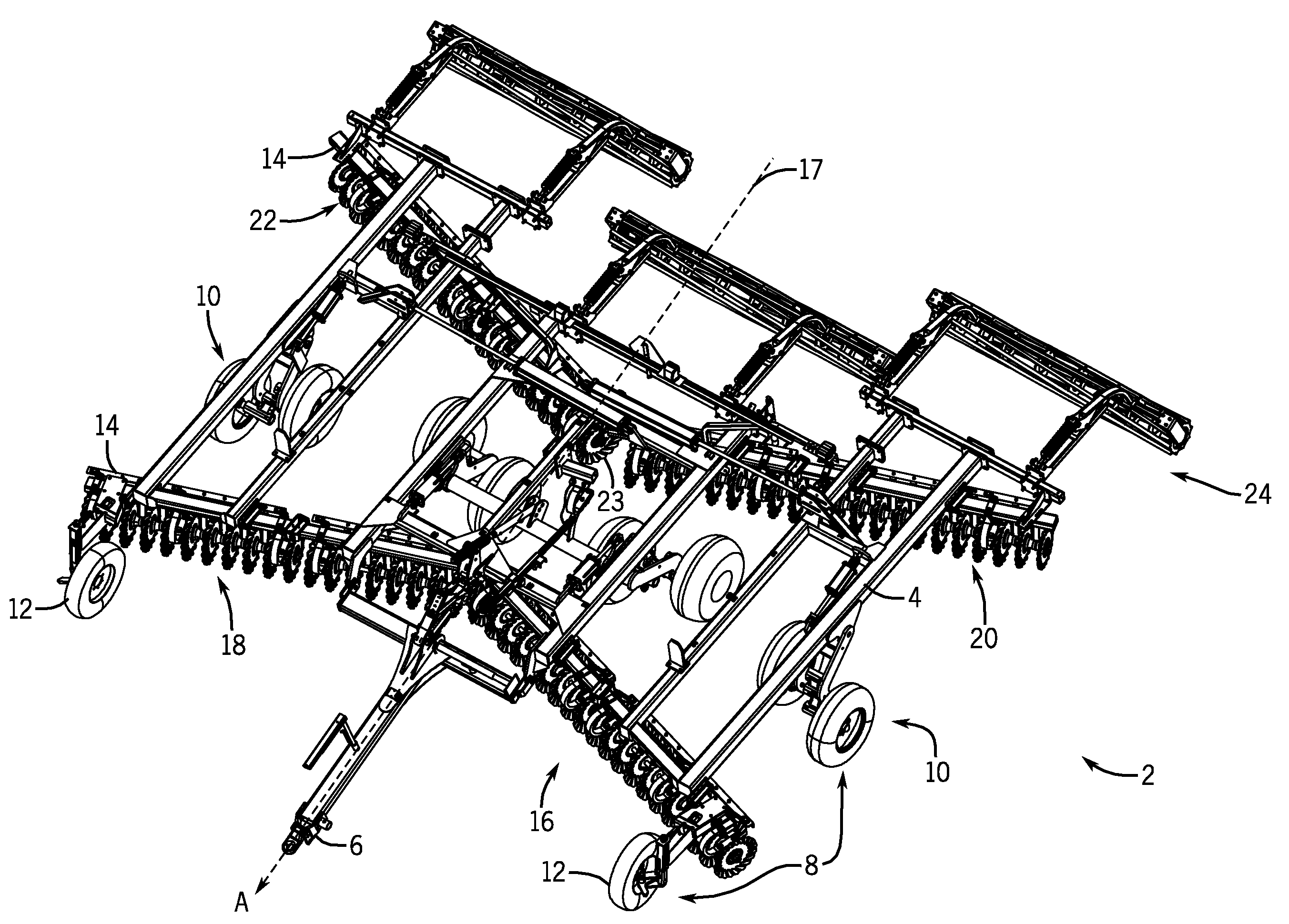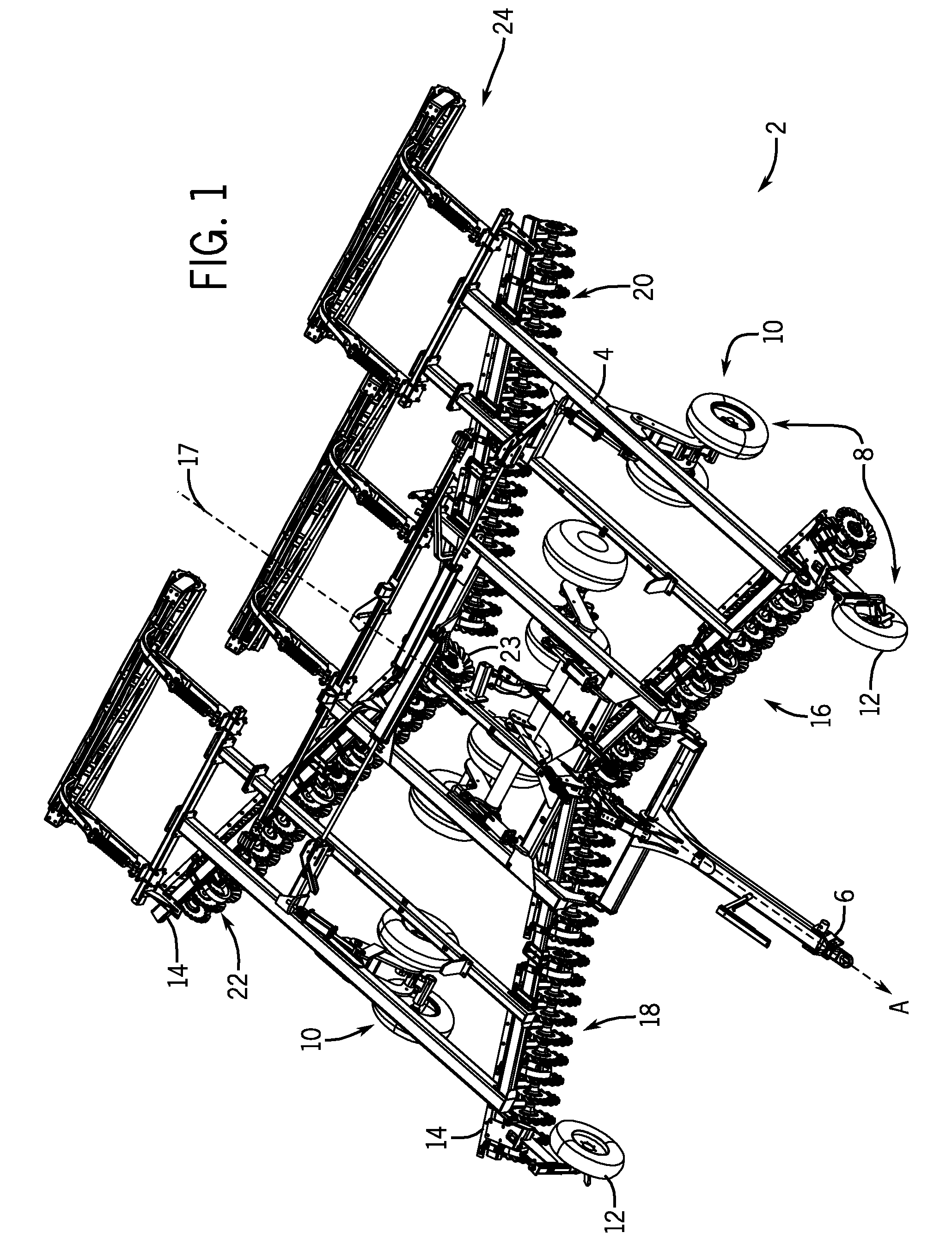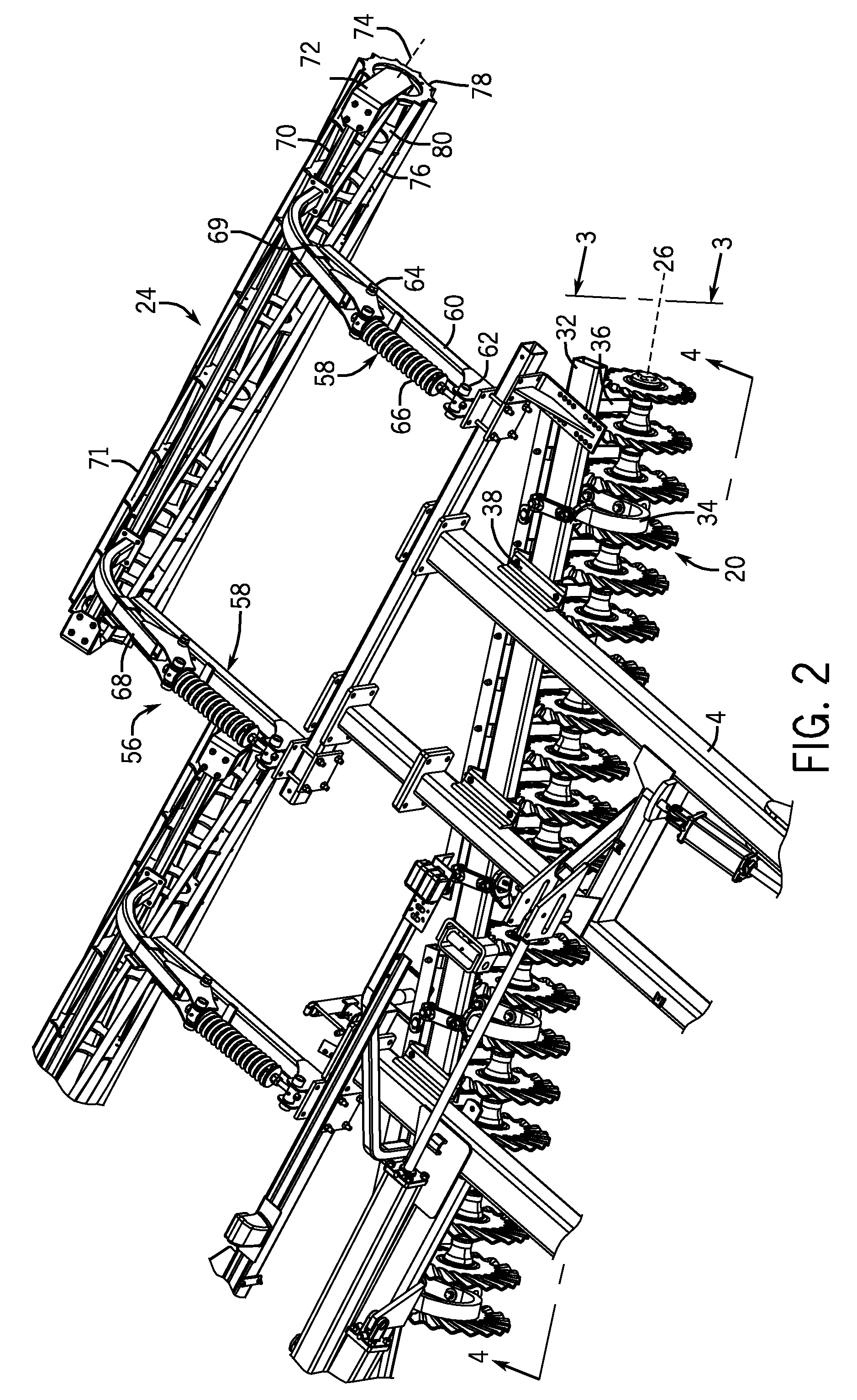Vertical Tillage System
- Summary
- Abstract
- Description
- Claims
- Application Information
AI Technical Summary
Benefits of technology
Problems solved by technology
Method used
Image
Examples
Embodiment Construction
[0039]Referring to FIG. 1, a vertical tilling implement 2 is shown. An agricultural vehicle pulls the vertical tilling implement 2 in a direction of motion A. The vertical tilling implement 2 includes a main frame 4. The main frame 4 has a hitch 6 on the front end that may be used to connect the vertical tilling implement 2 to an agricultural vehicle such as a tractor. Additionally, a set of wheels 8 are connected to the main frame 4. The set of wheels 8 are oriented in a direction that is in general alignment with the direction of motion A. The set of wheels 8 includes a set of center wheels 10 and a set of pivoting wheels 12. The set of center wheels 10 is attached across the main frame 4 at positions, for example, roughly midway between the front and rear ends of the main frame 4. The set of center wheels 10 may include a system for adjusting the distance between the main frame 4 and the set of center wheels 10. This system for adjusting may permit the set of center wheels 10 to ...
PUM
| Property | Measurement | Unit |
|---|---|---|
| Angle | aaaaa | aaaaa |
| Length | aaaaa | aaaaa |
| Depth | aaaaa | aaaaa |
Abstract
Description
Claims
Application Information
 Login to View More
Login to View More - R&D
- Intellectual Property
- Life Sciences
- Materials
- Tech Scout
- Unparalleled Data Quality
- Higher Quality Content
- 60% Fewer Hallucinations
Browse by: Latest US Patents, China's latest patents, Technical Efficacy Thesaurus, Application Domain, Technology Topic, Popular Technical Reports.
© 2025 PatSnap. All rights reserved.Legal|Privacy policy|Modern Slavery Act Transparency Statement|Sitemap|About US| Contact US: help@patsnap.com



